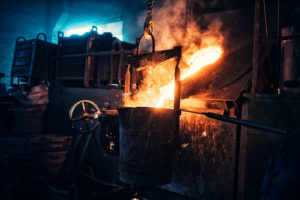
Die Casting Techniques
Electrophoretic deposition and powder coating are two metal finishing processes. They involve applying a coating to a metal substrate to improve its resistance to corrosion and wear, to promote adhesion, and for several other purposes. To decide which one to choose for your metal surface finishing requirements, it is important to get an idea about what they are and understand the differences.
Electrophoretic Deposition
Also known as e-coating or electro-coating, this metal finishing technique is more akin to electroplating than it is to powder coating process. With electrophoretic deposition, the substrate of a metal is immersed in a liquid solution that may comprise an epoxy, paint, or some of the other water-based solutions. After that, an electric current is passed through to attract suspended particles in the bath, and thereby, deposit the same onto a substrate’s surface.
The electrophoretic deposition prolongs until the preferred coating thickness is achieved through the process, and that thickness can be regulated by decreasing or increasing the voltage. The coated substrate of a metal is cured in an oven in order to promote cross-linking.
Powder Coating
While electro-coating involves the use of a specialized bath, powder coating is not a “wet” metal finishing process. Instead, it involves the use of dry powder that consists of epoxy resins and several curing agents. The metal finishing engineers use an electrostatic spray gun to exert the particles onto a substrate’s surface. Since they are charged, the particles adhere to its surface.
Further, the process of powder coating uses curing as the last step in the coating process. That phase in the metal finishing technique leads particles to melt serving as a catalyst that produces the finish desired by operators, clients, or end users.
When to Opt for Electrophoretic Deposition over Powder Coating
Owing to the application of the coating, the former is usually a better option when it comes to coating the components that have tough-to-reach areas. That is because the immersion of a metal object into the e-coating bath promotes a more balanced and thorough disposition of the coating as opposed to what is achievable using an electrostatic spray gun. On the other hand, the application of dry powder to the surface of a substrate tends to produce an even thicker coating.
On the contrary, the electro-coating process makes regulating the level of thickness much easier than powder coating, so that transpires to the ease of producing a thinner coating. These advantages are especially significant in the automobile segment, wherein an e-coating for components is usually applied as a primer before painting to increase its corrosion resistance. The coating can be applied on the die cast components used on the exterior of automobiles to enhance its resistance to corrosion.
